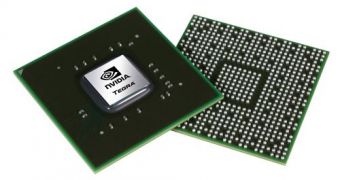It appears that, even with the promising start that the Tegra 2 platform got, investors aren't very confident in NVIDIA's plans for the computing market, as competition is sure to escalate and it is not clear if the company will really fare as well form now on.
Consumers keeping track of things on the IT market will probably know of what has occurred during CES, MWC and CeBIT 2011.
Over the course of all three trade shown, a fair number of tablets were unleashed, some based on the ARM architecture and running Android, while other used x86 CPUs and ran Windows.
Many of the ARM ones were constructed with the NVIDIA Tegra 2 SoC (system-on-chip) and were loaded with the Android 3.0 Honeycomb OS.
As such, NVIDIA became quite optimistic and even said it would launch a quad-core Tegra this year, codenamed Kal-El.
Now, however, it seems that the Santa Clara, California-based GPU maker's shares actually decreased instead of rising over the past weeks.
For one, the many Android tablets proved less formidable as iPad opponents because of their high prices and the fact that Apple already unleashed the iPad 2.
There is also the issue of competition on the part of Texas Instruments and Qualcomm, plus other ARM chip makers.
Even Nvidia Chief Financial Officer David White is said to have agreed that it is not easy to tell just how much of the tablet sector NVIDIA will manage to take away form Apple.
“How big is the tablet business going to be this year? I don’t think anybody knows,” were his words.
For those that want numbers, NVIDIA's shares dropped 4.49%. Still, this doesn't seem to have done anything to dissuade it from pursuing its dream of 'heterogeneous computing,' which implies that mobile processors will come to have hundreds of specialized cores, for handling wide arrays of different tasks.

 14 DAY TRIAL //
14 DAY TRIAL //